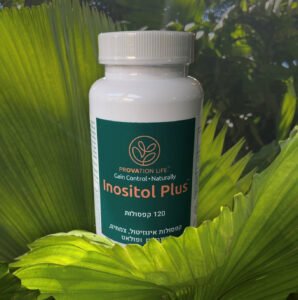In a world where mindfulness meets creativity, the humble bottle journal has emerged as an inspiring way to combine sustainability, self-expression, and emotional well-being. Instead of discarding empty bottles, you can transform them into personalized journals that preserve your thoughts, sketches, affirmations, or research notes inside a transparent container. This creative practice is not only eco-friendly but also offers a tactile, almost magical experience—opening a bottle to retrieve a message feels like uncovering a hidden treasure. Whether you’re a psychologist exploring therapeutic tools, a teenager looking for a fun project, or someone seeking to elevate your journaling routine, a bottle journal invites you to turn scraps into stories.
Why Choose a Bottle Journal?
The appeal of bottle journals lies in their versatility and charm. Unlike traditional notebooks, they let you experiment with form and content: folded papers, colorful cards, or tiny scrolls can all find a home inside glass or plastic containers. For professionals in mental health, they present a fresh way to engage with clients—especially when discussing themes like resilience, gratitude, or future planning. Teenagers, too, appreciate the hands-on aspect, using bottle journals to stash wishes, doodles, or inspirational quotes.
Psychologically, working with tactile objects such as bottles can foster focus and reduce stress. Crafting something tangible from repurposed materials also encourages environmental awareness and a sense of accomplishment, making the process itself as meaningful as the finished product.
Getting Started Materials and Tools
You don’t need expensive supplies to begin. Most of what you need is already in your home or recycling bin:
- Bottles: Glass or sturdy plastic bottles with wide mouths work best. Mason jars or repurposed beverage bottles are popular choices.
- Paper: Recycled sheets, cardstock, or specialty paper cut into strips or small rectangles.
- Writing instruments: Pens, fine markers, or colored pencils.
- Decorative elements: Ribbons, twine, fabric scraps, washi tape, beads, or stickers.
- Other tools: Scissors, glue, tweezers (to place notes inside narrow bottles), and optional waterproof varnish.
Wash and dry bottles thoroughly to remove labels and residue. If you prefer a rustic look, leave some labels intact and incorporate them into your design.
Creative Themes and Formats
Once you have your materials, let your imagination lead. Here are some engaging ideas:
- Affirmation Bottles
Write positive statements or empowering reminders on slips of paper, then roll or fold them before placing them inside. Each time you need encouragement, open the bottle and pull one out. - Gratitude Jar
Dedicate your bottle to daily or weekly gratitude notes. Over time, you’ll build a collection of uplifting memories to revisit. - Goal Tracker
Write your short-term or long-term goals on separate scrolls. Watching your bottle fill with intentions can be deeply motivating. - Therapeutic Reflections
For counselors and psychologists, a bottle journal can serve as a non-threatening tool for clients to express emotions. Encourage them to “send” messages to themselves or to their future selves. - Teen Memory Capsules
Teenagers can decorate bottles with paints or charms, then fill them with photos, ticket stubs, or letters, creating a time capsule to open later. - Creative Writing Prompts
Slip story starters or inspirational quotes into the bottle. When you need a spark, draw one and let your creativity flow.
Decorating Your Bottle Journal
Presentation adds a personal touch to your project. Try these techniques:
- Paint or frost the glass for a dreamy, opaque look.
- Wrap the bottle in jute or twine for a bohemian style.
- Use Mod Podge to adhere magazine clippings or patterned paper to the exterior.
- Attach tags or charms to the neck for labeling themes like “Hopes,” “Dreams,” or “Daily Wins.”
For teenagers, glow-in-the-dark paints or vibrant washi tape can make bottle journals stand out as playful art pieces.
Bringing Psychology and Creativity Together
In therapeutic settings, bottle journals align beautifully with narrative therapy and positive psychology. They invite participants to frame their experiences as stories worth saving. A psychologist might, for instance, guide a client to write weekly “strength notes” describing moments they felt capable or calm, then deposit these notes into a decorated container. Over time, the bottle becomes a visual record of growth and resilience, reinforcing a hopeful perspective.
This integrative approach is highlighted in resources like the Book For Psychologists Creative Journals In A Bottle, which explores how professionals can use bottle journals to foster client engagement, support emotional regulation, and spark imaginative self-reflection. Blending evidence-based techniques with accessible craft projects, this kind of guide shows how even simple recycled objects can become tools for insight and healing.
Tips for Longevity and Organization
To keep your journal fresh and organized:
- Use acid-free paper to prevent yellowing over time.
- Label bottles with dates or themes, especially if you maintain multiple collections.
- Keep bottles out of direct sunlight to preserve colors.
- For messages you want to protect, consider sealing them in small envelopes before placing them inside.
If you plan to store bottles for years, ensure they’re tightly sealed and placed in a dry location.
Expanding the Concept
Bottle journals don’t have to stop at paper messages. Experiment with:
- Mini collages or folded sketches.
- Pressed flowers or leaves paired with written reflections.
- Tiny photographs or Polaroids that evoke cherished memories.
- Quotes from favorite books—perfect for teenagers building a library of meaningful words.
Educators might use bottle journals in group projects, encouraging students to collaborate on themed collections such as “Acts of Kindness” or “Shared Dreams.”
Sustainable and Soulful Practice
At its core, the bottle journal celebrates the value of transformation: turning waste into art, fleeting thoughts into tangible keepsakes, and everyday practice into emotional nourishment. It’s a sustainable craft that resonates across generations and professions. For psychologists, it offers a creative medium to support clients’ self-discovery. For teenagers, it provides an outlet for identity exploration and memory-making. For anyone who loves crafting, it’s simply an enchanting way to repurpose what might otherwise be thrown away.


